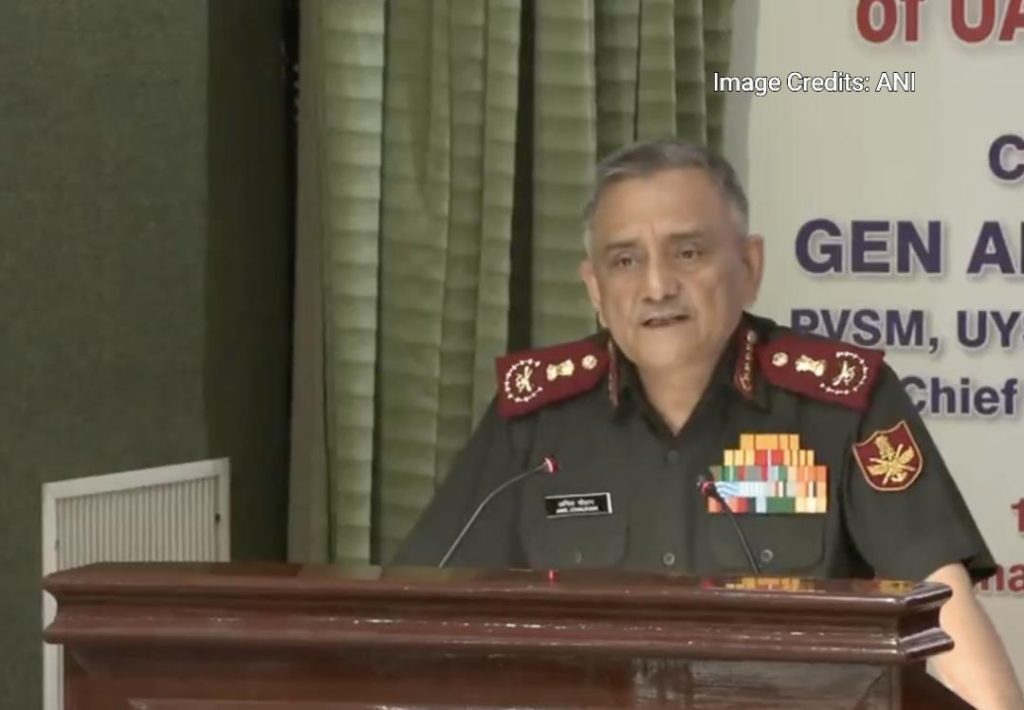
Pak used unarmed drones & loitering munitions: CDS Anil Chauhan
In a recent briefing, Chief of Defence Staff (CDS) General Anil Chauhan revealed that Pakistan used unarmed drones and loitering munitions during the conflict in May. The CDS provided a detailed account of the situation, stating that none of the drones or loitering munitions inflicted any damage to the Indian military or civil infrastructure.
According to General Chauhan, the Pakistani military employed these unmanned aerial vehicles (UAVs) and loitering munitions in an attempt to create chaos and disrupt the Indian military’s operations. However, the Indian Armed Forces were well-prepared and effectively neutralized most of these threats through a combination of kinetic and non-kinetic means.
Kinetic means refer to the use of force to neutralize the threats, such as destroying the drones or loitering munitions with anti-aircraft fire or precision-guided munitions. Non-kinetic means, on the other hand, involve using tactics such as electronic warfare, cyber warfare, or psychological operations to disrupt the enemy’s command and control systems, or to manipulate their decision-making processes.
General Chauhan’s statement is significant because it provides a rare glimpse into the tactics and strategies employed by the Pakistani military during the conflict. By using unarmed drones and loitering munitions, the Pakistani military was attempting to exploit the vulnerabilities of the Indian military’s air defenses and disrupt their operational tempo.
However, the Indian Armed Forces were able to respond effectively to these threats, demonstrating their ability to adapt to changing circumstances and employ a range of tactics to neutralize the enemy’s capabilities. The recovery of some of the drones and loitering munitions in almost intact condition is a testament to the Indian military’s professionalism and ability to learn from their experiences.
The use of unarmed drones and loitering munitions by the Pakistani military is a relatively new phenomenon, and it has significant implications for the conduct of military operations in the region. These types of systems can be used to conduct reconnaissance, provide real-time intelligence, or even conduct precision strikes against targets.
However, they can also be vulnerable to detection and neutralization by air defenses, particularly if they are not equipped with advanced countermeasures or are detected early in their flight. The Indian military’s ability to neutralize these threats demonstrates their ability to adapt to changing circumstances and employ a range of tactics to achieve their objectives.
The conflict in May was significant because it marked a escalation in tensions between India and Pakistan, which had been simmering for several years. The conflict was sparked by a series of terrorist attacks carried out by Pakistan-based terrorist organizations, which resulted in the deaths of several Indian soldiers and civilians.
In response, the Indian military launched a series of counter-terrorism operations against terrorist targets in Pakistan, which resulted in significant damage to terrorist infrastructure and the neutralization of several high-ranking terrorist leaders. The Pakistani military responded by launching a series of attacks against Indian military targets, which resulted in the loss of several lives and significant damage to infrastructure.
Despite the escalation of tensions, the conflict was ultimately brought under control through diplomatic efforts, with both sides agreeing to a ceasefire and returning to the negotiating table. However, the conflict highlighted the need for greater cooperation and dialogue between India and Pakistan to address the root causes of terrorism and to prevent future conflicts.
In conclusion, the revelation that Pakistan used unarmed drones and loitering munitions during the conflict in May is significant because it highlights the complexity and sophistication of the Pakistani military’s tactics and strategies. The Indian Armed Forces’ ability to neutralize these threats through kinetic and non-kinetic means demonstrates their adaptability and professionalism, and serves as a reminder of the need for greater cooperation and dialogue between India and Pakistan to address the root causes of terrorism and to prevent future conflicts.






